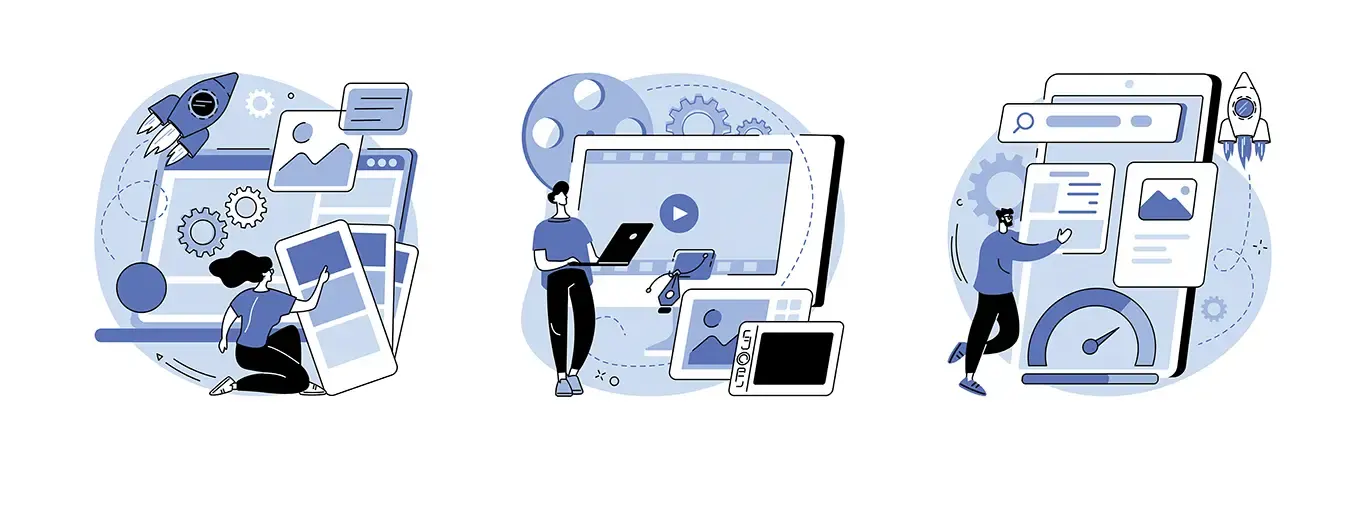Since the advent of animated films at the turn of the twentieth century, the technology that powers animation, visual effects, and motion graphics has advanced dramatically.
Motion graphics are becoming an important aspect of design across all digital platforms, with web design being particularly responsive to new innovations in the sector.
What is motion graphics, and how does it work?
As the name implies, motion graphics are any visual effects or graphics that have elements of motion or movement. It serves as the foundation for animated films, user interface/user experience design, text-based promotions such as infographics, and a variety of other visual media platforms. Their main goal is to assist consumers by making content more aesthetically pleasing and compressing complex information into bite-sized, easy-to-consume packages.
How does motion graphics relate to website design?
Any visual effects or graphics with aspects of motion or movement are referred to as motion graphics. It serves as the foundation for animated films, UI/UX design, text-based promotions such as infographics, and a variety of other visual media platforms. Their main goal is to assist consumers by making content more aesthetically pleasing and compressing difficult information into small, easy-to-consume chunks.
Add this video here : https://theyearofgreta.com/
This allows customers to navigate through products and pages at a much more leisurely pace, in addition to providing an aesthetic balance to the entire page. They’re not likely to be overwhelmed by text alone, which is where motion graphics come in.
Motion graphics can play an important role in the way a user interacts with a website, in addition to being advertising tools. This is especially true for mobile apps with additional web pages. Travel agencies, for example, frequently utilize motion graphics to compare the user’s movement from one page to the next to a bus ride or to display discounted fares.
E-commerce sites do something similar as well, using motion graphics to highlight special offers over the holidays. All of these choices may seem insignificant on an individual level, but they combine to produce a unique, wholesome, and unified experience that has a personal influence on the user and aids in the development of a relationship between the user and the website!
Using Motion Graphics to Make an Emotional Connection!
Aside from the obvious benefits, motion graphics can help a website create an emotional connection with its visitors. This is primarily accomplished in two ways:
a) Developing the brand’s personality
b) Creating eye-catching content
Any leading brand must establish a brand personality.
Take Red Bull, for example: their ‘Red Bull gives you wiiiings!’ campaign is a great illustration of how motion graphics can help establish brand identity. This is seamlessly integrated into their website on the necessary pages, resulting in a consistent brand personality. In terms of eye-catching information, web designers can use motion graphics to express pain points and concepts that would otherwise require a wall of text. As previously said, product websites are an excellent example!
Creating a memorable user interface!
The physical way in which users interact with your website is referred to as UI (User Interface). This is one area where motion graphics can help create a nice user experience. A nice sound when a user clicks a specific button on a website, for example or a flawlessly integrated website that zooms between pages in a logical and transitional manner are both instances of excellent user interface design. Motion graphics can be really useful in this situation.
Sites such as YouTube and Twitch, for example, allow subscriber buttons to change from ‘Subscribe’ to ‘Subscribed’ when the user clicks on them. Users can cancel their membership by clicking the button again, which will alter the wording to ‘Subscribe.’ This is a strong and intuitive approach to include motion graphics into the user interface!
How can motion graphics be used effectively in web design?
We didn’t think you’d ever ask! Well, the possibilities for incorporating motion graphics into web design are unlimited, but here are a few examples of how web designers might use motion graphics:
Animated Storytelling is a type of animation that tells a story
Many businesses may choose to use animated storytelling to describe what their brand stands for and what it accomplishes. Motion graphics can be used in a variety of ways in web design, including infographics, animated shorts, advertising, promotional content, and social network ads.
Short Product Descriptions
In any product-based web page, product shorts are usually prominent and striking. Hence, the designer should strive to keep the product brief, as this allows them to convey a story/explain a product while keeping the user engaged.
Content for Promotion
Promotional content, like shorts, can be the main feature of a page or can be used to enhance other aspects. Regardless, they use motion graphics to assist attract the user’s attention, and when used effectively, they can help the website achieve its objectives.
So there you have it! These are just a few of the reasons why motion graphics can be an extremely effective tool for creating memorable websites.
Check out Ubi Academy’s motion graphics course to explore, brush up or learn the skills!

